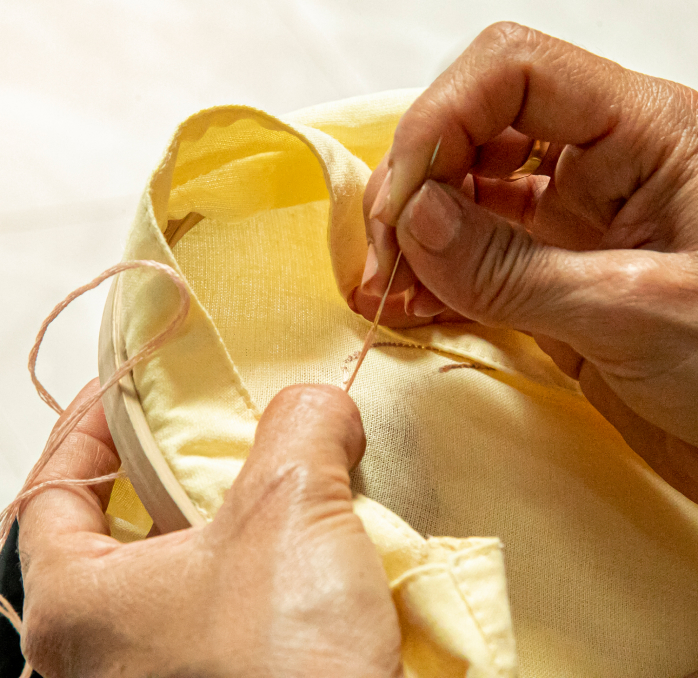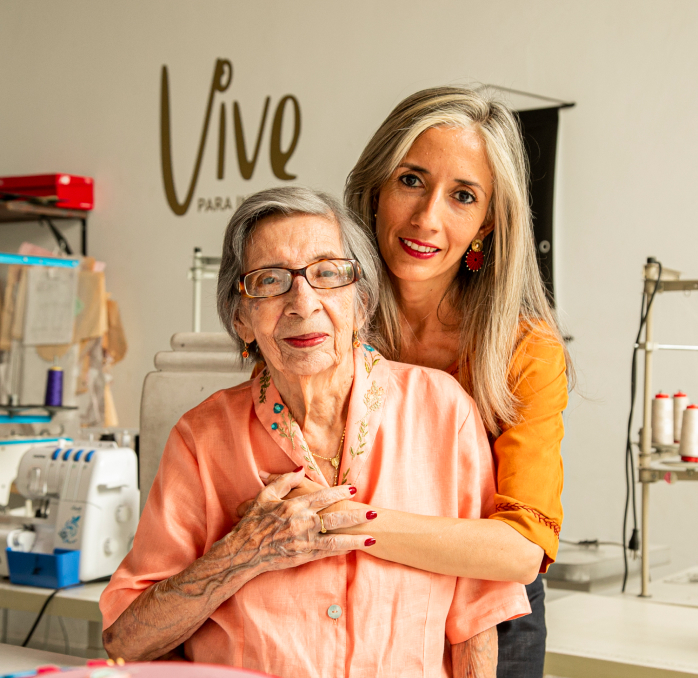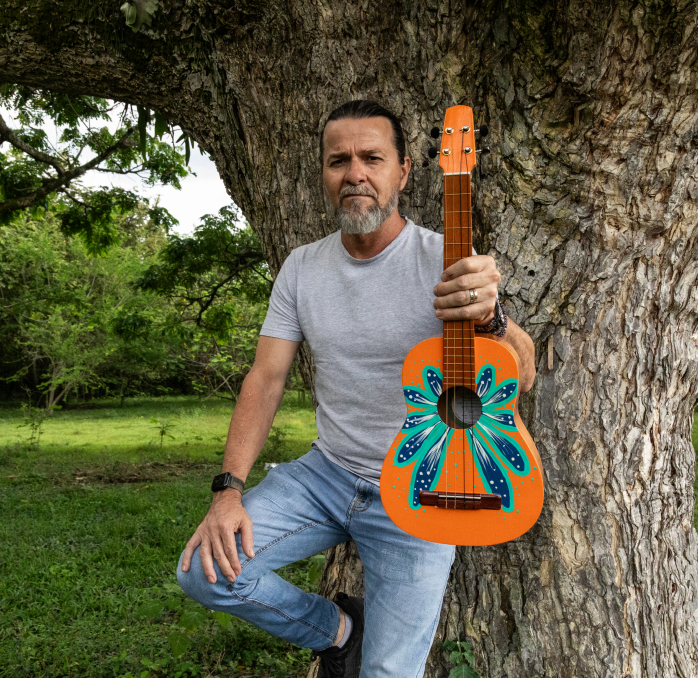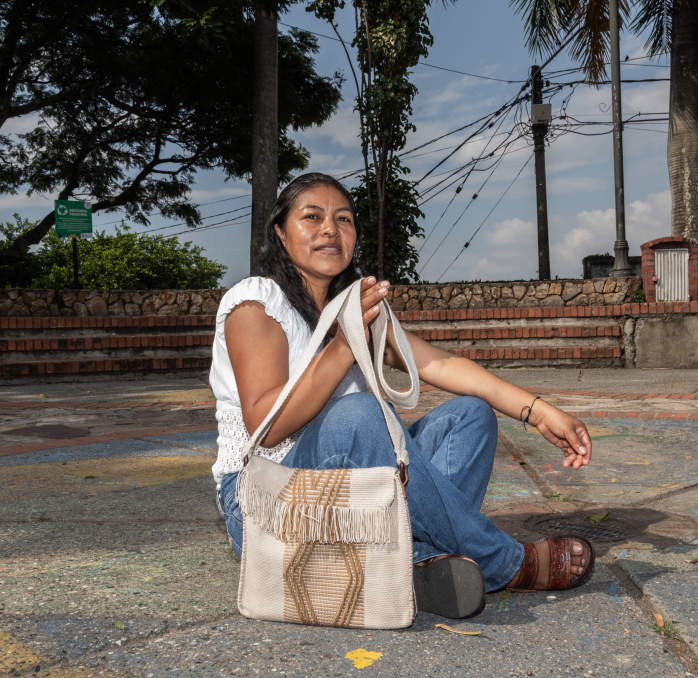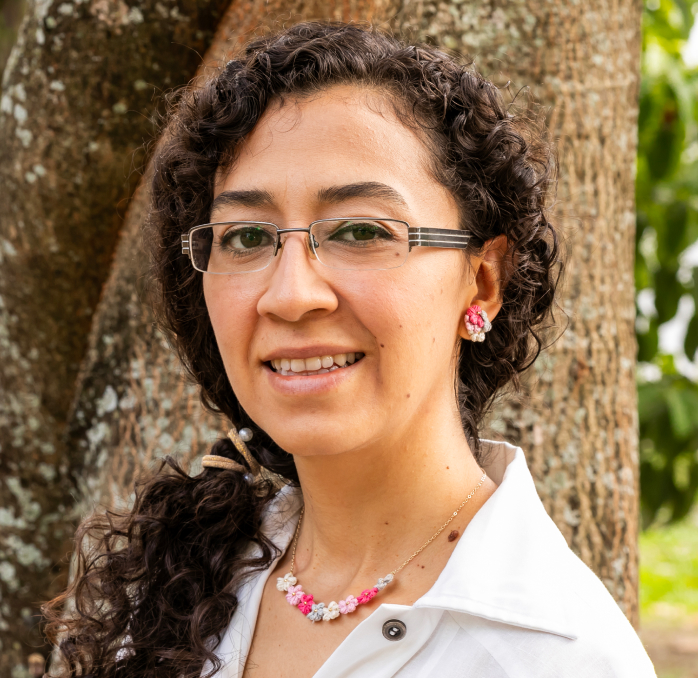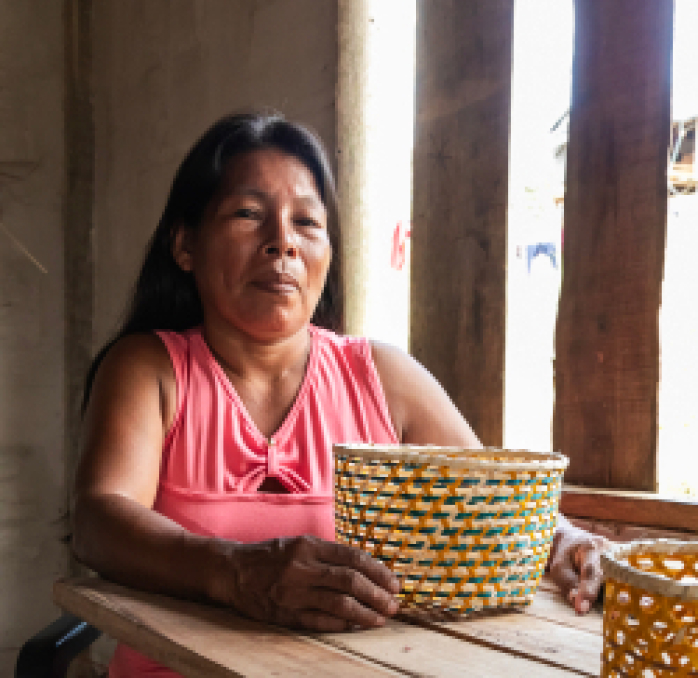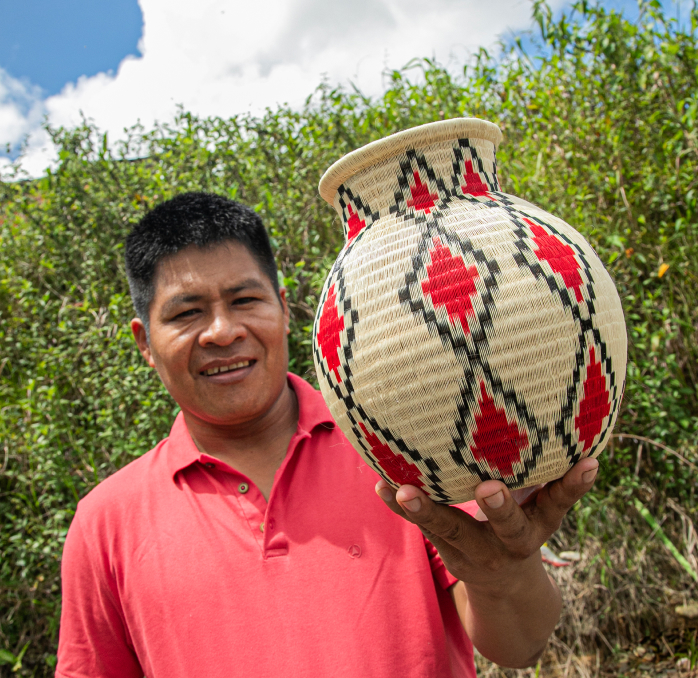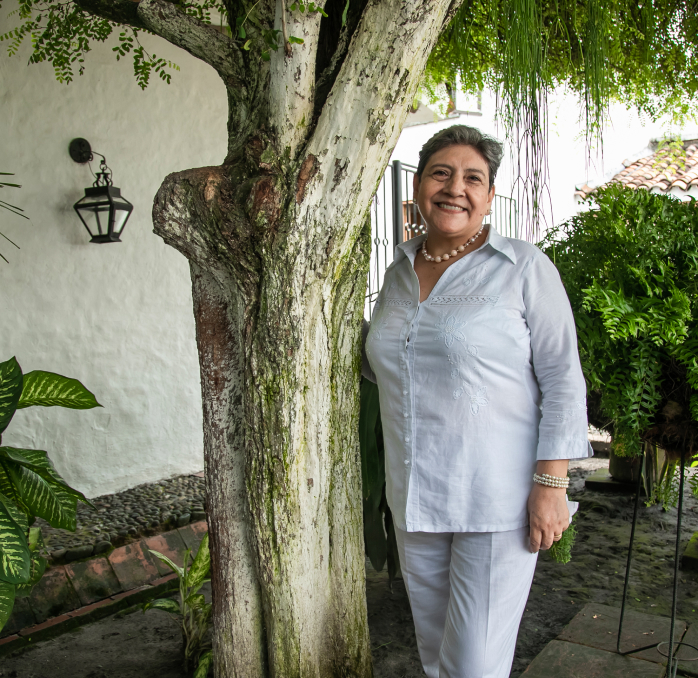Yamileth Henao
Workshop: Yamileth Henao
Craft: Trabajos en tela
Trail: Valle del Cauca route
Location: Cartago, Valle del Cauca
Cartago, known as an embroiderer’s haven, is the home of María Inés Escobar and Yamile Henao—two women wholly dedicated to this craft passed down through generations from one woman to the next. María Inés, the mother, learnt the craft at an early age under the tutelage of her grandmother, Teresa Hincapié, who tasked her with the making of her own undergarments, pillowcases, and linens. Later, during her schooling, sewing became an integral part of her curriculum. She imbibed valuable wisdom, such as working under ample light and meticulously crafting buttonholes by hand—a technique that gave her the practice and equilibrium necessary to embroider using a sewing machine. María Inés proceeded to impart her knowledge to her four daughters, including Yamile, who would inherit her devotion for the textile artistry.
Born in Cartago but raised in Santa Marta, the city her family had adopted, Yamile never expected to return to Cartago. After obtaining a degree in Business Administration, she ventured into agriculture and initiated a business. However, life took a turn. In 2006, circumstances led them back to Cartago, where they had to start from scratch. It was then that embroidery reappeared in her life. While María Inés had remained engaged with textiles during the years in Santa Marta, primarily crafting custom garments with a sewing machine, Yamile rediscovered the tradition imparted by her mother during her formative years, which awaited dormant in her hands. Memories of her initial stitches and the weaved, crocheted, and embroidered pieces she crafted, with the guidance of her mother, came back to her. Cord and chain stitches were the first techniques María Inés had taught to her daughters, followed by the puntada mordida and rococó stitches.
Upon returning to Cartago and while searching for a job, both María Inés and Yamile resumed their relationship with embroidery and its diverse techniques. Cutwork enabled them to craft motifs by intricately cutting fabric, tambour embroidery facilitated bead and stone embellishments, cord embroidery enabled drawing with a suspended cord interlaced with threads, and the randas technique was utilized for tracing lines. Along with the more than 120 embroidery stitches existing, this craft became a solace for Yamile during a period of mourning. The communion between women—united by threads, hoops, and needles—proved cathartic and restorative. Simultaneously, she imbibed new stitches and honed her proficiency in their application. The realization that she was already well-acquainted with embroidery was a surprising experience. Thanks to her mother’s guidance and companionship, Yamile embraced her calling in crafts, embarking on an exploration of this creative realm.
In the present, both María Elena and Yamile have their own brands, working closely. They favor linen for their creations—a breathable and hypoallergenic fabric well-suited for cutwork, thanks to its warp and weft. Both are active members of the B&C Puntadas del Sol corporation and participate in fairs alongside eight other workshops. Some of their colleagues have over four decades of experience in the craft. Moreover, Yamile has represented the guild before the Department of Culture since 2018. Through her efforts, a plan for safeguarding the craft and designating it as cultural heritage was formulated, in addition to enacting public policies that shelter their craft.
Craft












Artisans along the way
Artisans along the way
No puede copiar contenido de esta página










































